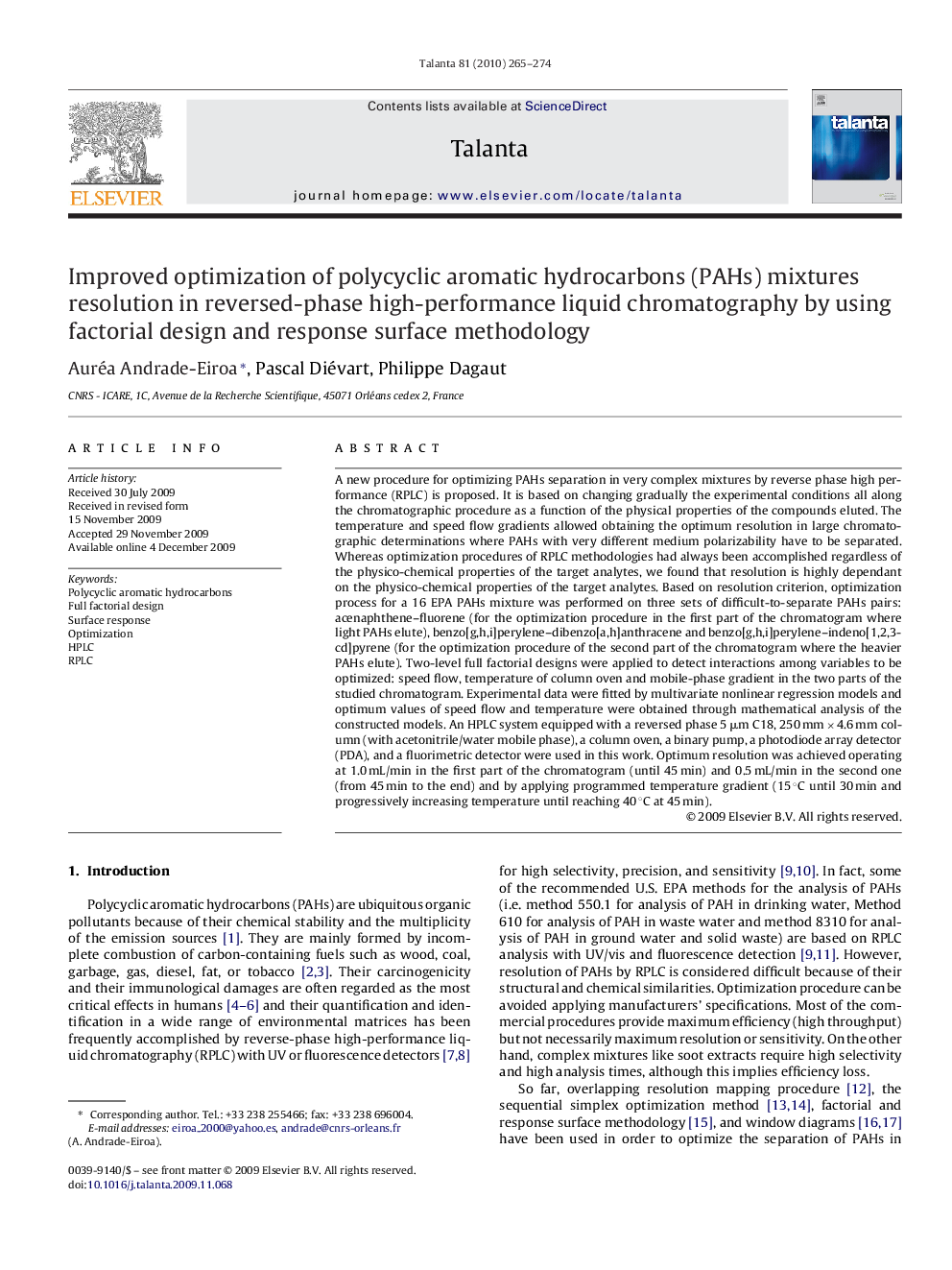| کد مقاله | کد نشریه | سال انتشار | مقاله انگلیسی | نسخه تمام متن |
|---|---|---|---|---|
| 1246644 | 1495851 | 2010 | 10 صفحه PDF | دانلود رایگان |

A new procedure for optimizing PAHs separation in very complex mixtures by reverse phase high performance (RPLC) is proposed. It is based on changing gradually the experimental conditions all along the chromatographic procedure as a function of the physical properties of the compounds eluted. The temperature and speed flow gradients allowed obtaining the optimum resolution in large chromatographic determinations where PAHs with very different medium polarizability have to be separated. Whereas optimization procedures of RPLC methodologies had always been accomplished regardless of the physico-chemical properties of the target analytes, we found that resolution is highly dependant on the physico-chemical properties of the target analytes. Based on resolution criterion, optimization process for a 16 EPA PAHs mixture was performed on three sets of difficult-to-separate PAHs pairs: acenaphthene–fluorene (for the optimization procedure in the first part of the chromatogram where light PAHs elute), benzo[g,h,i]perylene–dibenzo[a,h]anthracene and benzo[g,h,i]perylene–indeno[1,2,3-cd]pyrene (for the optimization procedure of the second part of the chromatogram where the heavier PAHs elute). Two-level full factorial designs were applied to detect interactions among variables to be optimized: speed flow, temperature of column oven and mobile-phase gradient in the two parts of the studied chromatogram. Experimental data were fitted by multivariate nonlinear regression models and optimum values of speed flow and temperature were obtained through mathematical analysis of the constructed models. An HPLC system equipped with a reversed phase 5 μm C18, 250 mm × 4.6 mm column (with acetonitrile/water mobile phase), a column oven, a binary pump, a photodiode array detector (PDA), and a fluorimetric detector were used in this work. Optimum resolution was achieved operating at 1.0 mL/min in the first part of the chromatogram (until 45 min) and 0.5 mL/min in the second one (from 45 min to the end) and by applying programmed temperature gradient (15 °C until 30 min and progressively increasing temperature until reaching 40 °C at 45 min).
Journal: Talanta - Volume 81, Issues 1–2, 15 April 2010, Pages 265–274